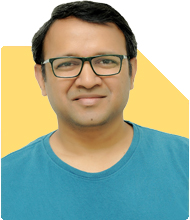59 year old man seeks investment advice for his portfolio during market volatility
Ramalingam Kalirajan |10894 Answers |Ask -Follow
Mutual Funds, Financial Planning Expert - Answered on Apr 04, 2025
He has an MBA in finance from the University of Madras and is a certified financial planner.
He is the director and chief financial planner at Holistic Investment, a Chennai-based firm that offers financial planning and wealth management advice.... more
.jpg)
Dear Sir, I am 59 years old salaried person, doing SIP Axis midcap @5K, Axis ESG @5K, Parag Parikh Flexicap @25K, Nippon Multicap @7.5K Nippon Smallcap@5K, SBI Smallcap @4K and Canara Smallcap @3K per month from last four years. The SIP is to be continued for another five years. In context of the present market volatility, will you please review my portfolio? I am not risk averse. Goal is wealth creation.
Assessing Your Existing Portfolio
You have a well-diversified equity portfolio with mid-cap, small-cap, flexi-cap, ESG, and multicap funds.
The majority of your investments are in aggressive-growth categories.
Your risk-taking ability is clear from the allocation to small and mid-cap funds.
You have been investing consistently for four years, which is a good approach.
Your SIPs are planned for another five years, giving your investments time to grow.
Strengths of Your Portfolio
Growth Potential: Small and mid-cap funds have higher return potential over the long term.
Diversification: Investing across categories helps balance risk and return.
Flexibility: The flexi-cap and multicap funds allow fund managers to switch between market caps.
Consistency: Regular SIPs reduce the impact of market volatility.
Key Areas for Improvement
1. High Exposure to Small & Mid-Cap Funds
Your portfolio has a strong tilt towards small and mid-cap funds.
These funds can be volatile, especially in uncertain markets.
A slight reallocation towards large-cap funds can add stability.
2. Sector-Specific Risk in ESG Fund
ESG funds are theme-based and depend on specific regulatory and global trends.
This can lead to underperformance if ESG sectors face downturns.
Consider reducing exposure to ESG or tracking its performance closely.
3. Overlapping Investment Strategies
Some of your funds may have similar stock holdings, leading to duplication.
Too many funds in the same category do not always mean better diversification.
A focused approach with fewer but well-selected funds may work better.
Recommended Portfolio Adjustments
1. Reduce Small-Cap Exposure
You already have multiple small-cap funds.
Retaining one strong performer and reducing others can improve risk management.
The freed-up capital can be shifted to large-cap or balanced funds.
2. Increase Large-Cap Allocation
Large-cap funds provide stability and steady growth.
A 15-20% allocation in a strong large-cap fund can improve balance.
This will ensure that your portfolio withstands short-term market fluctuations.
3. Monitor ESG Fund Performance
ESG funds have a unique investment strategy.
If the performance is inconsistent, switching to a flexi-cap or multicap fund may be better.
Managing Market Volatility
SIP Continuation: Continue your SIPs as planned to benefit from rupee cost averaging.
Rebalancing: Adjust allocations annually based on market conditions.
Profit Booking: Consider partial withdrawals in strong market phases.
Taxation Considerations
Equity Mutual Funds: LTCG above Rs 1.25 lakh is taxed at 12.5%. STCG is taxed at 20%.
Reallocation Impact: Switching funds may lead to taxable capital gains.
Tax-Efficient Withdrawals: Plan redemptions to minimize tax liability.
Final Insights
Your portfolio is well-structured for wealth creation.
Reducing small-cap exposure and adding large-cap stability can improve balance.
Regular monitoring and minor adjustments will keep your investments on track.
Best Regards,
K. Ramalingam, MBA, CFP,
Chief Financial Planner,
www.holisticinvestment.in
https://www.youtube.com/@HolisticInvestment
You may like to see similar questions and answers below
Nikunj Saraf | Answer |Ask -Follow
Mutual Funds Expert - Answered on Apr 28, 2023
Ramalingam Kalirajan |10894 Answers |Ask -Follow
Mutual Funds, Financial Planning Expert - Answered on Apr 23, 2024
Ramalingam Kalirajan |10894 Answers |Ask -Follow
Mutual Funds, Financial Planning Expert - Answered on May 18, 2024
Ramalingam Kalirajan |10894 Answers |Ask -Follow
Mutual Funds, Financial Planning Expert - Answered on Jul 09, 2024
Ramalingam Kalirajan |10894 Answers |Ask -Follow
Mutual Funds, Financial Planning Expert - Answered on Aug 05, 2024
Radheshyam Zanwar |6747 Answers |Ask -Follow
MHT-CET, IIT-JEE, NEET-UG Expert - Answered on Dec 16, 2025
Shalini Singh |181 Answers |Ask -Follow
Dating Coach - Answered on Dec 16, 2025
Patrick Dsouza |1429 Answers |Ask -Follow
CAT, XAT, CMAT, CET Expert - Answered on Dec 16, 2025
Nayagam P P |10858 Answers |Ask -Follow
Career Counsellor - Answered on Dec 16, 2025
Nayagam P P |10858 Answers |Ask -Follow
Career Counsellor - Answered on Dec 16, 2025
Samraat Jadhav |2510 Answers |Ask -Follow
Stock Market Expert - Answered on Dec 16, 2025
Samraat Jadhav |2510 Answers |Ask -Follow
Stock Market Expert - Answered on Dec 16, 2025
Nayagam P P |10858 Answers |Ask -Follow
Career Counsellor - Answered on Dec 16, 2025
Nayagam P P |10858 Answers |Ask -Follow
Career Counsellor - Answered on Dec 16, 2025
Ramalingam Kalirajan |10894 Answers |Ask -Follow
Mutual Funds, Financial Planning Expert - Answered on Dec 16, 2025



























